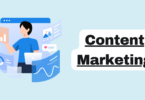
marketing
CMOs at any modern organization are expected to wear many hats and oversee many different aspects of the business. They’re faced with ever-expanding responsibilities because of the growing trend of integration between marketing and sales teams. With so many tasks to manage, the ability to automate repetitive and time consuming tasks is becoming a priority for many organizations.
Building a strong smarketing team is crucial for the success of any organization. As businesses increasingly operate in virtual environments, it becomes even more important to focus on team building strategies that are effective in this setting. Virtual team building enables employees to connect and collaborate regardless of their physical location, fostering a sense of unity and shared purpose. One key aspect of virtual team building is communication.
Effective communication channels are essential for remote teams to stay connected and aligned. By utilizing tools such as video conferencing software or project management platforms, teams can hold regular meetings, share updates, and discuss goals. This facilitates better understanding among team members and ensures everyone is working towards the same objectives. Another important factor in building a strong smarketing team virtually is trust. In a remote working environment, trust plays an even bigger role as physical proximity no longer exists to build rapport naturally.
Smarketing – The Symbiotic Relationship Between Sales and Marketing
Martech, particularly CRMs, has allowed marketing and sales teams to streamline the way they share, analyze, and optimize information and data. Collaboration between these two teams is integral for a company’s success in finding and retaining customers.
The alliance between the two teams has allowed sales teams to find and shape their content in ways that marketing teams have identified as most effective. The marketing team continuously listens to feedback, identifies challenges that sales teams face, and aims to create content that speaks to their core audience.
Sales and marketing teams can no longer exist in vacuums and live as siloed departments in an organization. They must be closely aligned to collaborate on planning and executing a unified business strategy. Companies with collaborative marketing and sales teams see 36% higher customer retention rates, and 38% increase in win rates.
Traditional Sales Strategies No Longer Get The Job Done
The digital landscape has evolved at a dizzying pace, and traditional sales strategies have failed to keep up with the times. As consumer behavior evolves with the advancement of technology, marketing and sales teams have had to innovate and transform their strategies to appeal to consumers’ wants and needs.
One example of an outdated methodology that no longer works in the complex digital landscape is lead scoring. Traditional lead scoring is founded on the assumption that people’s behavior on a website can determine intent. If they download an e-book or read a few blog posts, they are more likely to be interested in the product and would be a potential lead.
While this assumption may be partly true, it is difficult to truly understand the individual needs and wants of a potential customer without communicating directly with them. Most marketers understand by now, through the experience of being both marketer and consumer, that personalization is the most effective way to connect with an individual.
The main problem, however, lies in the availability of manpower. Most organizations cannot hope to converse and connect with each lead and prospect at scale due to limited budgets, but utilizing AI can help eliminate such challenges at a fraction of the cost and effort.
Addressing Skepticism and Learning To Trust AI
While AI has become more mainstream, there are still many marketers and executives alike who approach the idea of automation with skepticism and cynicism. One major factor of this fear is based on the vision of AI disrupting industries and causing jobs to become obsolete, leaving mass unemployment in the wake of its adoption.
Sales and Marketing teams fear that adopting AI would be similar to digging their own graves. However, AI is not sophisticated enough to overtake parts of jobs that humans can only perform.
Reducing the amount of time and energy that goes into low-impact and superfluous tasks will enable smarketing teams to spend more time on performing higher-value tasks. Allowing AI chatbots to take over menial tasks such as following up on leads, answering common questions, and scheduling meetings will free up sales and marketing teams to engage with tasks that are more meaningful and impactful.
Utilizing AI to weed out qualifying leads from uninterested ones will save the sales team a lot of valuable time. Investing resources into leads that ultimately do not lead to conversions is an undesirable outcome for all organizations.
Rather than maintaining an apprehensive attitude toward AI, marketing and sales teams would find it productive to develop a collaborative attitude. Teams that leverage the capabilities of AI to work alongside them will be able to produce results more efficiently and effectively. They are able to reduce repetitive tasks and focus on having meetings with qualified leads or managing relationships with current customers.
Which AI Solution Is Right For My Smarketing Team?
Understanding that AI should not necessarily be seen as a disruptive tool, but as an advantageous one, should raise a few questions for decision makers in smarketing teams.
Here are a few questions they should ask before deciding which AI solution might be right for their specific pain points.
- What are my current needs?
Each company has its own specific problems and bottlenecks. Identify what process takes up a lot of time, whether it be an administrative or manual task, and see if there is a possibility of automation. Which activities can and should be offloaded to an AI assistant, and which activities need a bit more of human touch? Booking meetings, updating leads, and nurturing email campaigns are all tasks that could be passed off to an automated system.
- Is it interoperable?
Find out if the solution works with your current workflow. The easier the integration is, the faster you can offload menial and repetitive tasks so you can focus on the higher-value activities.
- Is it future-proof?
Is this solution something you believe will last the test of time, or will it become outdated in a short amount of time? Are the automation features modifiable and configurable? Can you foresee this platform scale with your business?
Start Building Your Augmented Workforce with Exceed.ai
Ready for the future of work? Automatically follow up, nurture, and qualify all your leads and book meetings for your reps with two-way email & chat conversations with Exceed.ai. Get started with a free demo today!






